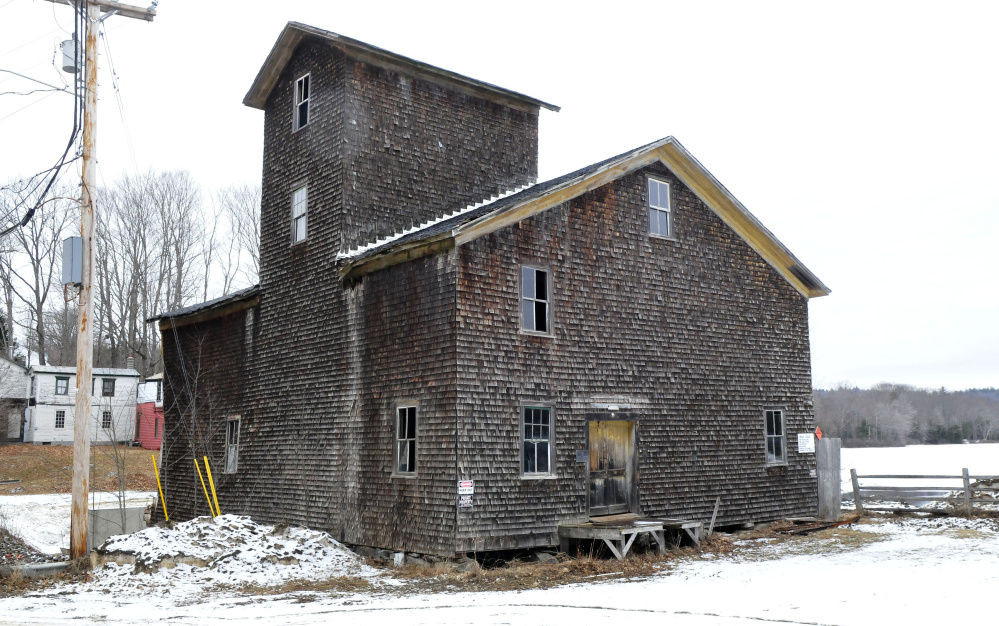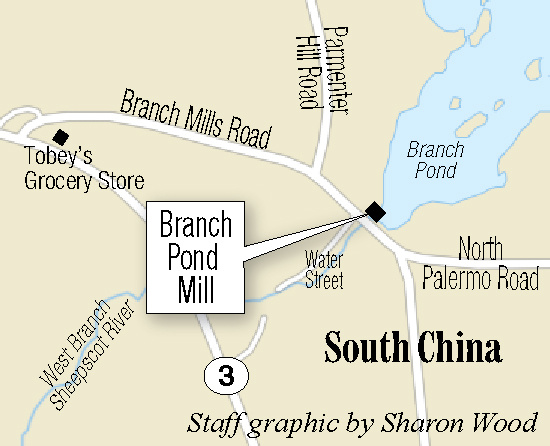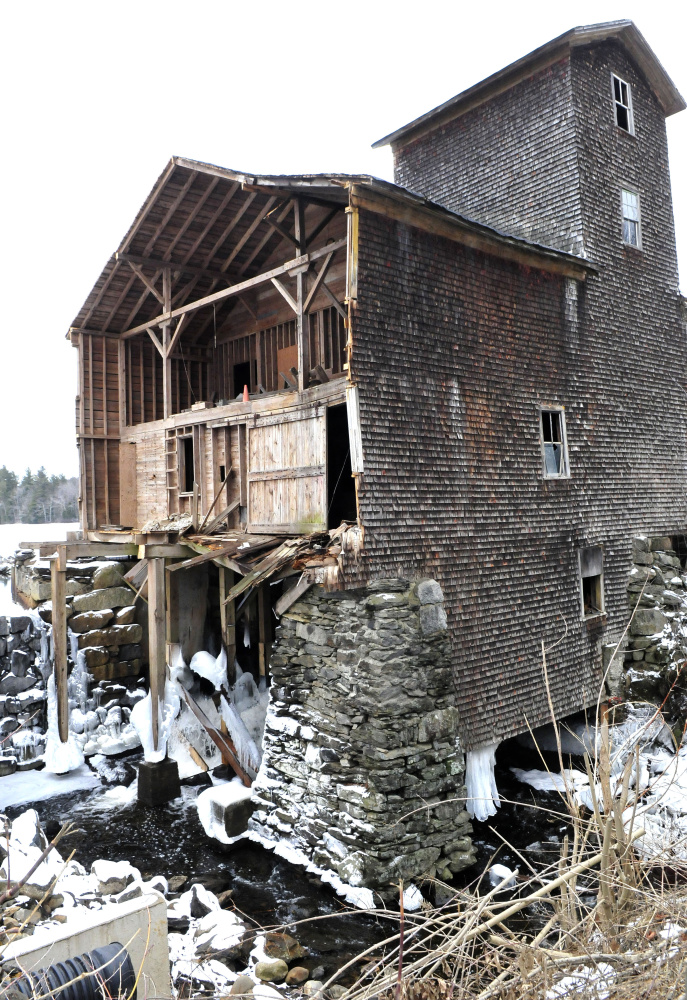CHINA — Work has begun to dismantle and demolish an aging mill straddling the dividing line between Palermo and China, an effort that a conservation group says ultimately will result in drawing a robust migration of river herring and alewives.
Once the mill is down, the Atlantic Salmon Federation will move forward with a purchasing agreement for the property and the remaining dam. The federation plans to repair the dam and install a passageway that will allow migratory fish to travel through the Sheepscot River watershed to Branch Pond.
The owners of Branch Pond Mill, Stephen and Christine Coombs, are in the process of clearing out the 200-year-old mill and salvaging historic pieces, said Andrew Goode, vice president of U.S. operations for the Atlantic Salmon Federation.
Goode said Tuesday that he expects the mill will be taken down by a demolition company sometime this month.
The federation plans to install a new water control gate system in the dam, which is needed badly, and then the fish passageway.
The acquisition of the dam is one part of the federation’s many efforts to restore “connectivity” in the Sheepscot watershed. Branch Pond is the headwaters of the west branch of the Sheepscot River, a key element in the Maine Headwaters Project, which has restored access to more than 500 river miles in the state.
“The species that would benefit the most are river herring and alewives,” Goode said. “Historically, it was believed that was one of the spawning ponds for alewives.”
The federation takes a “watershed restoration approach” to its project instead of focusing singularly on salmon, he said.
It also plans to create permanent public access to the pond, which residents now lack, Goode said.
Construction of the passageway probably will begin in 2018 or 2019, he said.
The mill and dam are off Branch Mills Road, a spur off Route 3, in South China. The old mill building has been called a safety hazard by the Maine Emergency Management Agency and the town of China for years.
“The water control system is in very poor condition,” Goode said.
The dam was listed as a “significant potential hazard” in 2014 in a report from the state dam inspector. An update from the inspector to the state on Jan. 31 this year said a sluice gate at the dam was overflowing about 6 inches.
Mark Hyland, director of operations for MEMA, said the Coombses appear to be working on the mill now, dismantling and removing historically significant elements of it, and the state is looking forward to the result.
“At this point, we think it’s a great opportunity,” Hyland said about the federation’s purchase of the site. “We’d like to get an owner of the dam that is nearby and monitoring the dam. We welcome the Atlantic Salmon Federation’s participation in that.”
The Coombses, who specialize in historic restoration, bought the property in 2003, hoping to restore both the dam and the mill as a historical site and education center.
The plan came to a standstill when the couple said they couldn’t make the necessary repairs because of a state-mandated water level order. However, the state denied the claims, saying the water order allows dam owners to get written permission to draw down levels for repairs.
Eventually the couple and the state emergency agency signed a consent agreement last spring that allowed the Coombses to adjust the water level for up to seven months to make repairs.
In August, the federation and the Coombses began working on an agreement in which the federation would buy the site once the couple took down the mill.
Madeline St. Amour can be contacted at 861-9239 or at:
mstamour@centralmaine.com
Send questions/comments to the editors.





